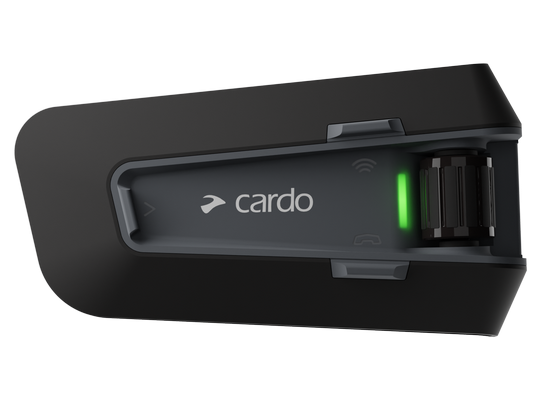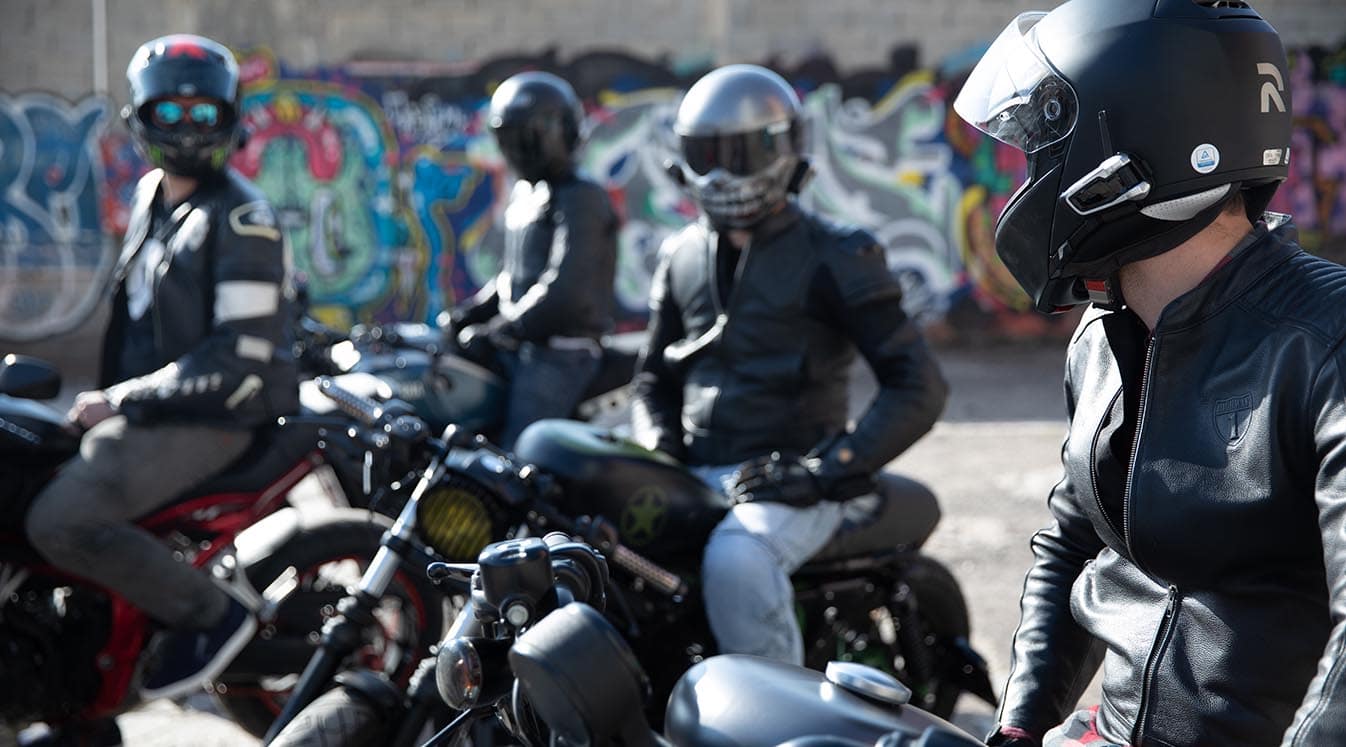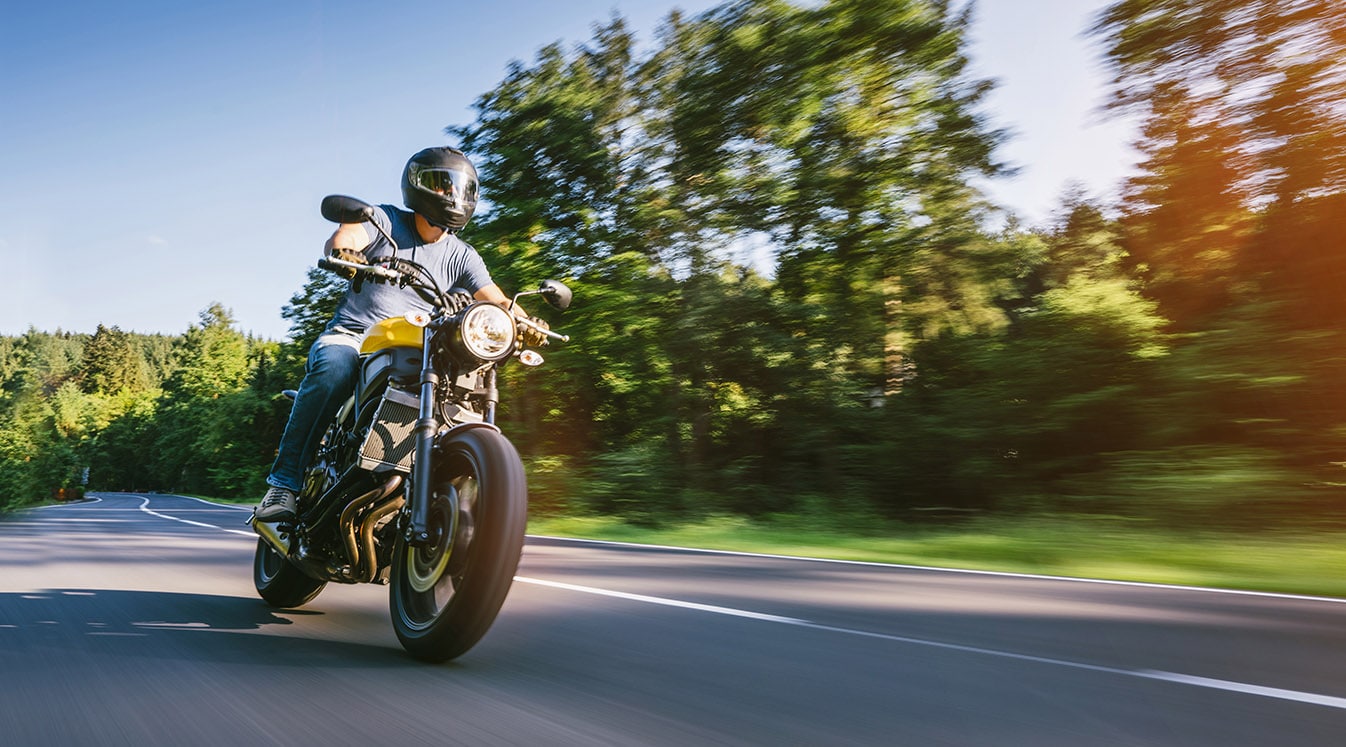Through the thousands of motorcycle models produced over the years, a handful of models have risen above the pack to become truly iconic. Each of these classic motorcycles had something a little different–a mechanical innovation here, a killer style there. Some just happened to have the right combination of features in the right market at the right time. All of them contributed to the rich lineage of today’s best speed machines.
So, without further ado, here they are (in no particular order): the 13 most classic motorcycles in history.
1. Honda CB750
If you love your Kawasaki Ninja or Suzuki Hayabusa (two bikes we’ll discuss later), remember to show respect to the Honda CB750, the great-granddaddy of them all. The CB750 popularized the inline four engine design that gives sport bikes their signature power today and became an instant bestseller, thanks to its innovative design.

A classic 1977 Honda CB750.
The CB750 spawned an entire segment of the motorcycle market: the Universal Japanese Motorcycle, or UJM. These bikes’ easy customization and versatile design made them massively popular, and they were the precursors to the endlessly customizable Japanese bikes we know today. And thanks to the unbeatable Honda reliability, many riders still rev up their CB750s as if they were brand new.
2. Harley-Davidson Softail
Unless you like feeling like you were worked on by an unlicensed back-alley chiropractor after every ride, you probably ride a motorcycle with a rear swingarm suspension. The Harley Softail didn’t invent the rear swingarm, but it damn near perfected it in its current form and it was the first motorcycle to provide the swingarm in the stylish hidden package that it usually appears in today.

The archetypical cruiser: a Harley Softail.
And, of course, the Softail remains one of Harley’s most popular and iconic motorcycles even now. It’s also a great example of a versatile platform that’s seen an array of cool evolutions like the Harley Softail Bob, Fat Boy, Springer and more. Much like a motorcycle helmet communication system, many riders found that once they’d ridden with the soft rear suspension, they just couldn’t ride without it.
Riding With Passengers? Check out These Motorcycle Helmet Communication Systems
3. Triumph Bonneville
You can’t keep a good bike down, and the Triumph Bonneville is living proof. Despite near-constant changes in ownership and a devastating factory fire, Triumph lives on and the classic design of the Bonneville is one major reason why. Named after the popular proving ground for land speed record attempts, the Bonneville is a just-minimal-enough roadster with the sleek appeal of a cafe racer but a slightly more comfort-first design.
When the owners of Triumph began plotting the brand’s revival in the mid-aughts, the Bonneville’s classic design made it a natural choice for appealing to young hipsters and old heads alike. And the new Bonnevilles are no joke. The base model alone comes packing a 1200cc engine that’s guaranteed to wow anyone who steps astride it.
4. Honda Super Cub
For many people around the world, a motorcycle isn’t a hobby–it’s a daily transportation vehicle that provides access to food markets, medical services and other basic needs. The Honda Super Cub is the king of this utilitarian market, and the proof is in its 60-plus years of continuous production and hall-of-fame sales numbers–100 million units sold throughout the model’s lifetime.

The Super Cub exemplifies many underrated characteristics of the motorcycle as a vehicle. It’s extremely fuel-efficient, simple to work on and rock-solid reliable, not to mention tons of fun to tool around on. But it’s also had cultural significance to match its sales: Honda used the Super Cub as a centerpiece of their “You meet the nicest people on a Honda” campaign in the early ’60s, a campaign which is widely credited with increasing acceptance of Japanese motorcycles and motorcycles in general in the U.S.
5. Suzuki Hayabusa
Many riders consider the Suzuki Hayabusa to be the archetypical modern superbike. Its name comes from the Japanese word for “peregrine falcon,” a bird famous for executing precision dive bombs at terrifying speeds. Upon the Hayabusa’s launch in 1999, its ridiculous 1300cc engine and sub-10-second quarter mile revolutionized the entire production superbike market, to the point that many motorcycle manufacturers entered an informal agreement to cap the power of their bikes to avoid triggering a regulatory crackdown.
Today, the Hayabusa is running over 20 years strong as one of the most impressive motorcycles out there. It’s still among the fastest stock motorcycles currently in production, its body design still looks like a giant robot from a mecha anime and it will still make you a magnet for state troopers anywhere you go, so easy on that throttle.
6. Harley-Davidson Sportster
Some consider the Softail to have the slight edge as the iconic Harley V-Twin, but the Harley-Davidson Sportster is the bike that has introduced one generation of riders after another to the magic of the hog. It’s been in continuous production in one form or another since 1957, and it remains one of Harley’s most consistent sellers.
For Harley riders who like their bikes light and zippy, the Sportster is a common choice over many heavier hogs. The Sportster’s smaller frame also led it to become popular among Harley’s women riders, a demographic that’s become increasingly important for Milwaukee’s finest. Its current iteration is the Iron Series, two trim-bodied beauties that are built for versatility, power and that most important of Harley qualities: attitude.

7. Honda Gold Wing
The Honda Gold Wing redefined what it means to cruise in the lap of luxury. Although it started life as a large sport bike meant to be a sequel to the CB750, the Gold Wing quickly evolved into the king of the “couch on wheels” full-fairing baggers. Now it’s the preferred choice of many hardcore touring riders (or, at least, of the hardcore touring riders who aren’t permanently on Team Harley).
Honda has continued to double down with the luxurious feature sets in its later Gold Wing models, adding features like Apple CarPlay and precision-molded seats for a pampered posterior. If you’re the type to pack a whole wardrobe for your motorcycle road trip and curate a 200-hour playlist to enjoy in your motorcycle Bluetooth headset, the Gold Wing might be just your type of experience.
Riding with Friends? Check out These Motorcycle Communication Systems
8. Kawasaki Ninja
The Ninja has been Kawasaki’s main sport bike platform for well over 30 years, and in that time, it’s no exaggeration to say that it has spanned the entire spectrum of what’s possible in the format. In the process, it’s set the standard for entire market segments in ways that continue to be relevant today.
Consider this: The Ninja 250R and its sequels have been the go-to starter sport bikes for one generation after another of new riders. But on the other end of the spectrum is the Ninja H2, a 200-horsepower speed demon that’s one of the Hayabusa’s only true competitors as the crown jewel of street-legal Japanese superbikes. It’s that incredible level of versatility and longevity that’s made the Ninja come out on top again and again.
9. Ducati Desmosedici RR
Rarer than a black pearl and as refined as the best Italian wines, the Desmosedici RR redefined the meaning of both luxury and performance for a production motorcycle. Although Ducati already had a long history of producing iconic motorcycles both for the consumer market and for professional MotoGP racers, this was the first time they’d ever brought the two worlds together in a street-legal production replica of a MotoGP track bike.

The result was the jaw-dropping and instantly legendary Desmosedici RR, which could hit a screaming top speed of 188 mph and retailed for an astonishing $72,500. Although its extreme exclusivity meant that it didn’t cause any particularly revolutionary changes in the market, the RR remains perhaps the ultimate example of a motorcycle that’s as much art as it is a consumer product.
10. Vincent Black Shadow
The world’s first superbike, the Vincent Black Shadow, seemed like something out of a fever dream when it arrived in 1948. It instantly caused a stir, thanks to its beefy 900cc engine and its then-unheard-of top speed of 125 mph. Hunter S. Thompson himself, the ultimate connoisseur of the extreme, wrote the bike into Fear and Loathing in Las Vegas as part of that book’s madcap haze of excess.
The Black Shadow’s impressive performance didn’t translate into a long lifespan for its manufacturer. Vincent only produced the model from ’48 to ’55 before exiting the motorcycle market entirely to focus on industrial engines and oddball projects like the ill-fated Amanda water scooter. But its legacy lives on today in the Vincent Owners Club (VOC), an ultra-dedicated group of hobbyists who bring the magic of Vincent’s vintage models to bike shows and events across the UK.
11. Royal Enfield Continental GT
The cafe racer is a motorcycle style with its own unique history rooted in a mid-20th century European cafe scene that included a whole lot of motorcycle racing. One of the most famous models to emerge from that scene was the Royal Enfield Continental GT, a snappy-looking British bike that was first demonstrated in a 22-hour road race from the northern tip of Scotland to the southern tip of England.

The slim, sporty styling of the Continental GT created a template that many cafe racer models after it would follow. Its drop handlebars, rear-set foot pegs and swept-back exhaust all brought the features of the thriving UK motorcycle racing scene into the households of average Britons. Today, the Continental GT lives again as one of the revived Royal Enfield’s flagship models and, by all accounts, it’s just as fun and zippy as it’s always been.
12. Buell XB12R Firebolt
If any motorcycle designer ever earned the title of “mad genius,” it’s Erik Buell, and many motorsport enthusiasts consider the XB12R Firebolt to be his magnum opus. The XB12R was a 1200cc naked bike that became one of the first “streetfighter”-styled models to find mainstream success. It was light and maneuverable thanks to its aluminum frame and powerful thanks to its brawler of a V-Twin engine–and, best of all, it was under $10,000.
Unfortunately, despite its innovative designs, Harley killed the Buell brand in 2009 in what many saw as a baffling and unfair business decision. All wasn’t lost, though. With the February 2021 announcement that Buell would be revived as an independent brand, it just might be that Erik Buell will get one more chance to stun the world.
13. BMW R32
We couldn’t finish out this list without a Beamer bike somewhere, and the BMW R32 makes the cut, thanks to its trailblazing design. Introduced in 1923, the R32 is one of the oldest motorcycles on our list, but you wouldn’t know it from the fact that the basic design of its powertrain is still in use nearly a hundred years later.

Several years before they even began building cars, BMW began to produce motorcycles. The R32 was a smashing success out of the gate, thanks to its reciprocating boxer twin engine and use of a drive shaft, a configuration with the same fundamentals as the one that BMW still uses for many of their most popular models today. The boxer twin remains a well-loved engine design, and BMW and its chief designer, Max Friz, deserve credit for the incredibly forward-thinking innovation that would soon come to be commonly associated with BMW.
The great thing about being a motorcycle enthusiast is that new models are always arriving on the scene to inspire adoration, controversy and lots of great riding. For more information on the leading lights of motorcycling today, be sure to see our complete guide to motorcycle manufacturers. And whether you’re riding something new or classic, Cardo Systems’ motorcycle communication systems will make your ride safer, more connected and more fun.
Image Credits
mi_viri/shutterstock.com
Clari Massimiliano/shutterstock.com
bodrumsurf/shutterstock.com
Lingsiae Photography/shutterstock.com
Vadim Axel/shutterstock.com
Imanol Ribera/shutterstock.com
DrimaFilm/shutterstock.com








